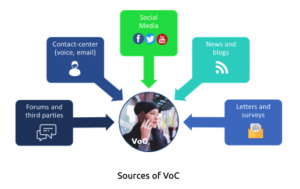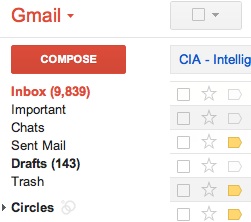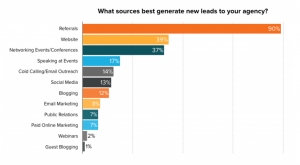You’re in a meeting with some co-workers and one of the older team members in the room says “Daaaa Bearsss!” A rise of laughter erupts from a handful of other employees. Several of the younger employees give polite smirks while looking clearly out of the loop. Then someone says, “Haven’t you seen that old SNL skit? Ohh it’s a classic! Are we really that old?”
Now reverse the scenario. Younger employees reference a TikTok that went viral, the latest internet meme, or quote from Schitt’s Creek.
It only takes a few pop culture references that you don’t understand to feel alienated from the rest of your group. Maybe you’ve experienced something similar within your contact center. And maybe your agents have, too.
Our Multi-Generational Modern Workforce
For the first time, the modern workforce spans up to five generations. Millennials account for more than half of all employees in the U.S., and they will comprise 75% of the global workforce by 2025. But there’s another trend at play. Baby Boomers are working longer.
It’s projected the total labor force will increase by nearly 7% from 2016 to 2026. And, the Bureau of Labor Statistics predicts the number of workers ages 65+ will rise by about 58%. And don’t forget Gen-Z. They’re entering the workplace, bringing new behaviors and expectations with them.
With technology evolving at rapid speed, generational differences get amplified in the office. These generational gaps cause more challenges than simply a few pop culture references getting lost in the mix.
Managing a workforce composed of different generations introduces a myriad of cultural difficulties, along with unique challenges for each group of workers.
So, what can you do as a manager to step outside of your own generation’s experiences? How can you care for the other generations represented in your office? How can you ID (then remedy) the challenges of managing a workforce composed of workers from different generations? And, how do you ensure the necessary coaching and training is available for your multi-generational team?
First, let’s dig into some of the primary challenges to consider.
What are the Challenges of Managing a Workforce Composed of Workers from Different Generations?
Challenge #1: Expectations in Company Culture and Work Styles
Each generation brings different values to the workplace. Influenced by events like economic recessions, periods of war and developments within technology, generational values vary widely.
Amy Casciotti, VP of human resources at TechSmith Corporation notes that, different generations value different things. They each communicate in their own way and prefer unique team structures. Not even perks of the job are universal.
“Understanding what people value and what motivates them makes it much easier to communicate job expectations, offer the right type of support or even make adjustments that will better suit a team’s performance,” said Casciotti.
For example, statistics show Baby Boomers value individuality. They see resilience and pursuit of material successes as important. Because of this, they have a commitment to working long hours. And, they work well within traditional hierarchical structures.
As a contrast, Generation X focuses on flexible work arrangements, family time and faster promotions. Millennials tend to value social activities, personal freedom and workplace engagement. Gen Z and Millenials often care about mental health issues and prefer companies that also value a healthy work-life balance.
Each of these values living in the workplace can create dissonance and conflict. As a leader in your company, it’s difficult to know the best way to accommodate these varying expectations. How do you create policies that honor different culture expectations in your contact center? Likewise, how do you take advantage of these diverse work styles to grow your contact center and better help customers?
Start by understanding the differences in values. This will be vital to manage a variety of attitudes and drive collaboration. As a manager, focus on honoring the diverse ways your agents and supervisors contribute to the workplace. Acknowledge the efforts of each team member, regardless of how they work..
Challenge #2: Technology
Probably the most obvious challenge with a multi-generational team is technology. As your contact center makes technological shifts, there are more skills and products to learn.
Younger generations who have grown up with the internet, laptops, cell phones, etc. tend to pick up new tech quickly. They’re used to the user interfaces on new platforms. But, for older generations, new technology and systems can be overwhelming.
For example, when you introduce new software or cloud technology to your team, your younger employees may be shouting with joy. They’ve been waiting for this. They pick up on the new systems without a problem and have minimal issues along the way.
On the inverse, your older employees may feel discouraged. The old processes they’ve used are thrown out the window. They’re resistant to learning because it feels too daunting. For some older members of the workforce, fast tech is foreign. It’s hard to keep up.
These differences in technological skills also feed into existing generational stereotypes. Phrases like “Ok, Boomer” or comments about Millennials being “lazy” creep into conversations. This language only widens the cultural gap. It’s important to be aware and careful when new technology gets introduced to your team.
When you bring new tech to your team, be aware of the strengths, weaknesses, and levels of experience your agents have with technology.
Two Ways to Make the Most of Generational Diversity in Your Workforce
It’s worth noting that generational stereotypes are often made to track trends. Your agents aren’t merely representations of their generations. There will always be anomalies in your workforce. That’s why it’s important to focus on all your agents as individuals.
How can you practically make the most of managing a workforce composed of workers from different generations? Here’s two ways how.
#1: Identify Preferred Management Styles
On your agent’s first day, identify their cultural expectations and work styles. Use personality tests and questionnaires to help identify what each agent values at work.
This will help you know how to adjust your management styles to fit their needs. If it’s an older employee, maybe they enjoy structure and oversight — they prefer you to stay hands-on, working closely with them while they handle their first few interactions. If it’s a Gen Z employee, they may want the freedom to create their schedule so they can have the flexibility to travel more. Knowing what your team members prefer will help you know how to approach each of them individually, as well as the team as a whole.
Talk with your people to learn how they view leadership, and identify your own personal management style. You’re not expected to be a chameleon and change up your management style entirely. But, it helps to know that your agent, Josh, is looking for mentorship from his manager. Or, maybe Maria prefers her manager makes decisions that include the entire team. These insights can guide you in forming an effective, long-term management strategy.
#2: Emphasize Coaching and Training to Help Employees Grow
Research from PayScale shows providing learning and development opportunities impacts employee turnover. And since agent turnover is the leading challenge impacting your contact center this year, it’s crucial to take extra steps to prevent it. How can you help agents discover the growth opportunities within your organization and account for their generational differences?
Be personal with your coaching and training. Your employees want and need different things from you as their manager and from their careers. The greatest way to make the most of generational diversity starts with individualized coaching. Take the time to sit with your agents 1:1 and use the insights you’ve gathered about their preferences to guide your sessions.
For example, say your agent Mark needs extra help with the new omnichannel software you’ve implemented, and he prefers hands-on training. Take time to walk him through new processes and show him where to find customer information, manage his queues, and jot down his wrap-up notes.
Maybe your agent Anne is struggling with de-escalating tough situations with customers. She prefers role playing to learn so she can test things out herself. When you’re coaching her, play out some scenarios so she can take a stab at her approach, and then offer your advice.
Coaching helps you meet the needs of your employees, and gives you opportunities to learn more skills as a leader. It’s a two-way street.
Let’s say John, your employee from the Baby Boomer generation, needs a little extra coaching around the new software you’re implementing. But, he’s thriving when it comes to resolving customer conflict. He has wisdom around conflict resolution from his years of experience working in contact centers across industry lines. This provides you with new outlooks and methods of de-escalating tough customer situations.
Or, maybe Megan, a Millennial employee, has less experience in project management. She’s struggling to stay on task and identify how to prioritize her metrics and all the interactions piling up in her queue. This skill may come with more professional experience and practice. When you identify this weakness, together you can come up with a plan to help her handle customer interactions in a way that isn’t overwhelming.
While she may need more practice with project management, she’s incredibly conscious of the mental and emotional needs of her other teammates. While you support her weaker skills, she can speak into what you can do as a manager to better support their health and wellness.
Learning from One Another: The Key to Managing Multiple Generations
Your employees have a wealth of knowledge. Diversity in age can sometimes create conflict or alienation in a workforce. But, managing different generations also allows you to access the strengths of each differing generation. Build a culture of respect, listen to your agents’ experiences, and meet them where they are individually. But most importantly, encourage your entire team to learn from one another.
Business & Finance Articles on Business 2 Community
(15)







